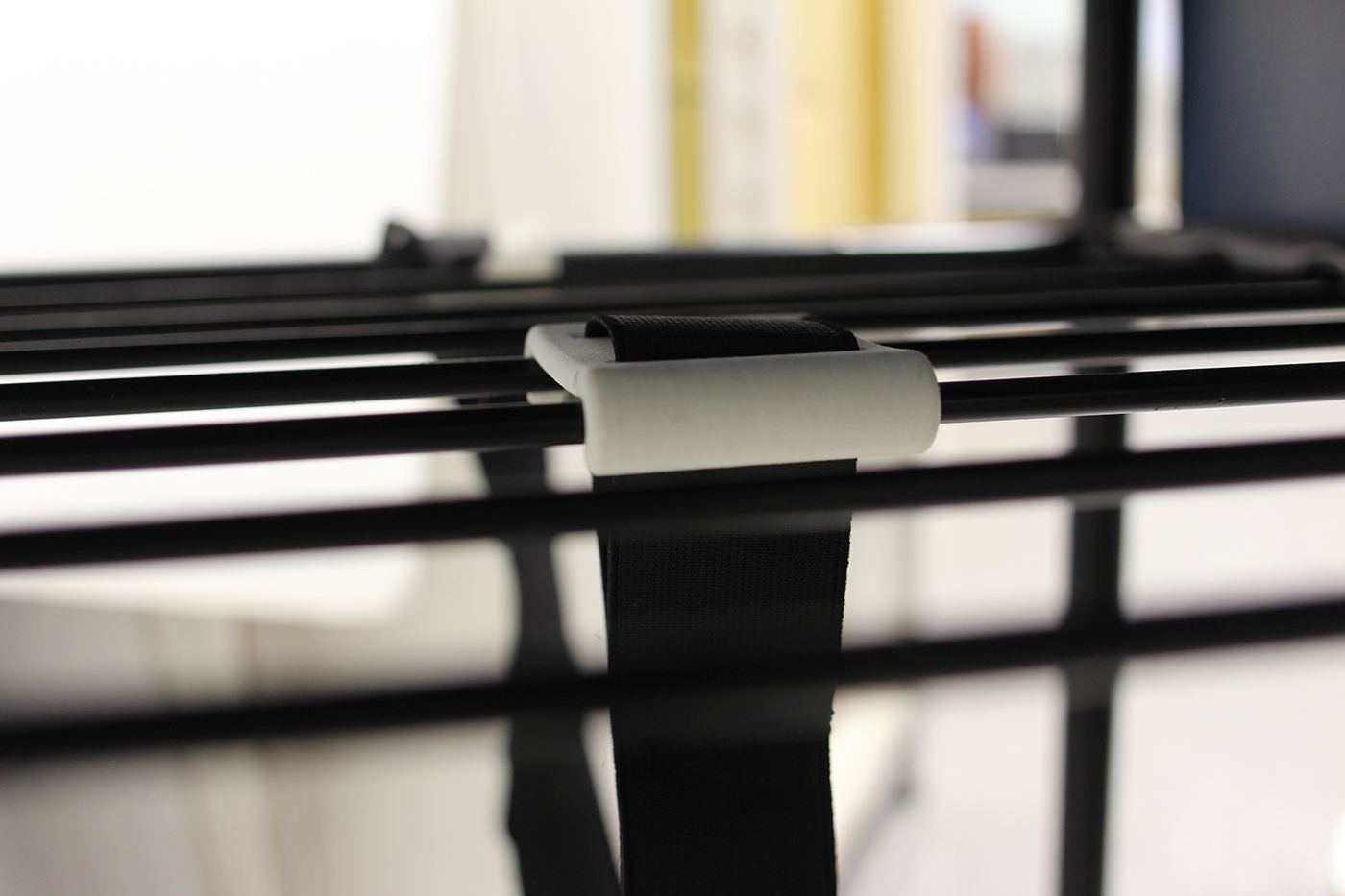
Fidget Modules: A Research Project
Conducted by the Design Incubation Centre in the National University of Singapore, this project was a spinoff from research into the intersection between priming and design, in the context of education. These fidget modules were designed and tested with our partner school, Canberra Primary School, where we received feedback and were able to tweak the design over 2 trials to create a satisfactorily finished product. The fidget modules exist now as a research outcome, and is in the process of seeking commercial viability.
Research and Design by Gloria Ngiam and Naroth Murali.
Support by Wille Tay, Yuta Nakayama and Patrick Chia.
Support by Wille Tay, Yuta Nakayama and Patrick Chia.
Attention and Focus
Young children, especially those at the primary level, are always known to have fairly limited attention spans. Coupled with the modern-day issue of dwindling hours allocated for a child’s daily active play, it is no surprise that young students struggle to stay focused for 30-minute blocks of lesson time with all that buildup of restless energy.

“The attention span of a boy in primary school is all of 7 minutes. If you’re wondering why your boy starts fidgeting after 10 minutes and needs to walk around, he doesn’t have attention deficit hyperactivity disorder. He just needs to move around.”
– Ms Genevieve Chye (Principal, Montfort Junior School)
Priming for Productivity
In simple terms, priming is an exposure to a stimulus or condition that affects one sub-consciously, without one’s explicit knowledge that it is guiding one’s behaviour.
The classroom is a fertile ground, rich in priming opportunities that can make teaching and learning more effective and productive. Movement in the classroom is essential to learning as it calms the body and primes the brain state for better learning by awakening and activating a child’s mental capacities.

Research has shown improvement in a child’s cognitive performance when it immediately follows physical activity.
– Dr Edward M. Hallowell (Child psychologist specializing in ADD and ADHD)
– Dr Edward M. Hallowell (Child psychologist specializing in ADD and ADHD)
Productive Fidgeting
Fidgeting is purely a bodily action, usually enacted absent-mindedly and repeatedly. Examples include finger drumming, leg bouncing, tapping out rhythms, etc. Fidgeting is a minuscule way of getting movement. Without stimulation from movement, the brain shuts down every 20 minutes and students’ minds begin to wander.

“When your body’s engaged, your brain’s engaged, I call it actively sitting. The students are maybe moving their legs a little, wiggling some. But their upper body, they’re focused on writing, on the teacher. It really works.”
– Tiffany Miller (Teacher, Bauder Elementary School)
– Tiffany Miller (Teacher, Bauder Elementary School)

Concept derivation
Adapted from existing leg bands, our initial design concept takes the form of a simple elastic module that can be easily attached to the metal grilles under every student’s personal desk. This module serves as a foot rest yet at the same time discreetly allows miniscule fidgeting for the leg and feet. The module not only utilizes the existing empty space beneath a desk but also creates a marginal space for a child’s productive fidgeting.
The interaction with the module has intrinsic kinesthetic benefits for the child but also extrinsically primes his/her state of mind for better concentration and focus during class.
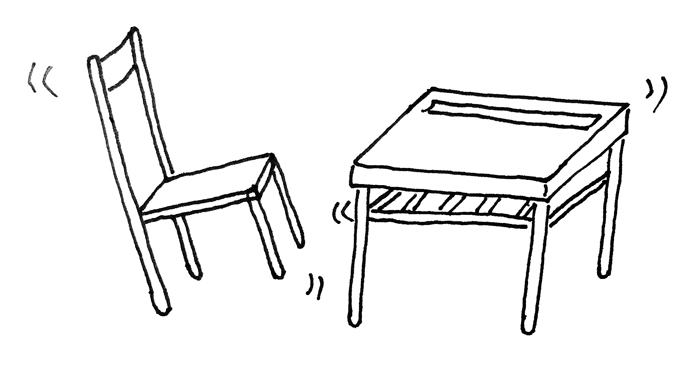
Hypothesis: Providing a discreet outlet of release for students’ restless energy through physical exertion can improve attention and concentration levels during lessons.
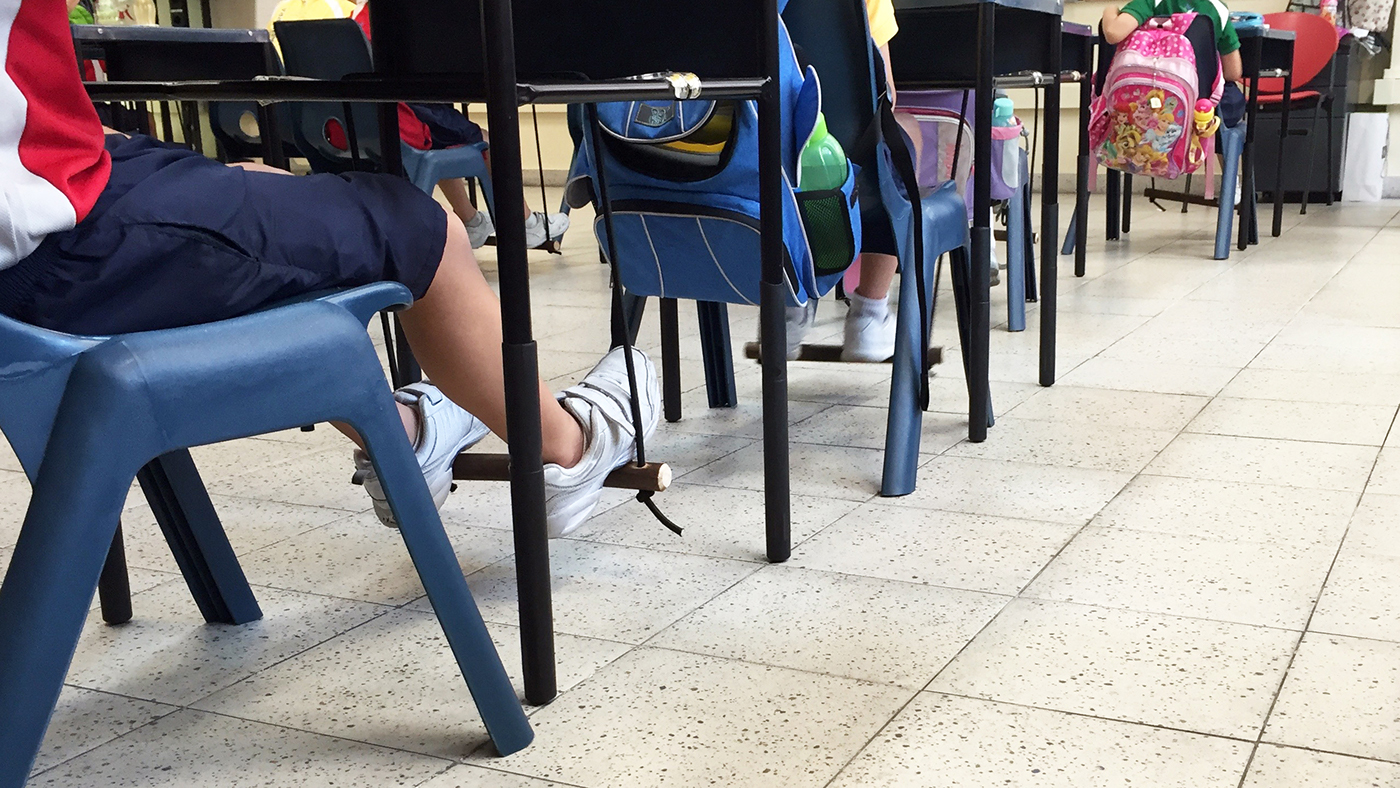
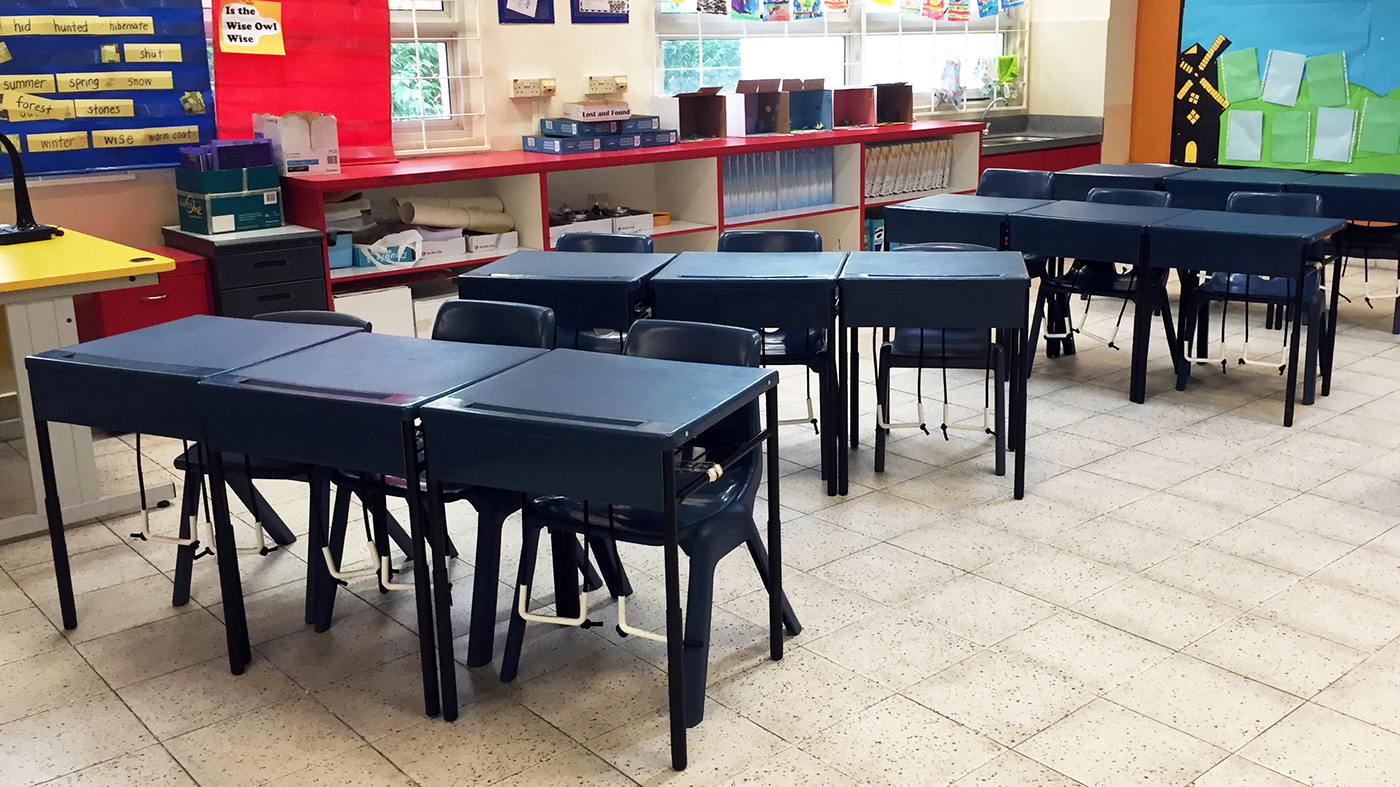
Trial 1
Duration: 4 Weeks
Number of Users: 90 students
Educational level of Users: Primary 2
Types of Fidget Module: 3
Number of Users: 90 students
Educational level of Users: Primary 2
Types of Fidget Module: 3
Methodology



Time-lapse cameras installed in classrooms for the entire trial duration help to capture important footage.

Setting up a mobile feedback channel on Whatsapp allowed designers to better collaborate and communicate with teachers to receive daily feedback and insights on regarding the fidget module usage.

Sample page from post-trial survey with questions focusing on enjoyment and preference in using the fidget modules.

Trial 2
Duration: 10 Weeks (Including 2 weeks of pre-trial observations)
Number of Users: 194 students
Educational level of Users: Primary 2, Primary 5
Types of Fidget Module: 1
Number of Users: 194 students
Educational level of Users: Primary 2, Primary 5
Types of Fidget Module: 1
Methodology
Contrary to Trial 1, we decided to start the observation setup 2 weeks prior to Trial 2. This is to establish a comparative measure before and after the introduction of the fidget modules.
Secondly, student feedback in Trial 2 also commenced from the very beginning with the student self-report measure. Instead of waiting until the trial is over to solicit general feedback, students were required to conduct self-reports thrice a week by completing a survey with questions spanning across 3 categories: cognitive performance, emotional performance, and behavioural performance. This consistent self-assessment of the fidget module usage and in-class performance provided us with more accurate and insightful data throughout the trial duration.


Primary 2 students completing the digital self-report survey under teacher instruction, by using their iPads to scan the survey QR code.
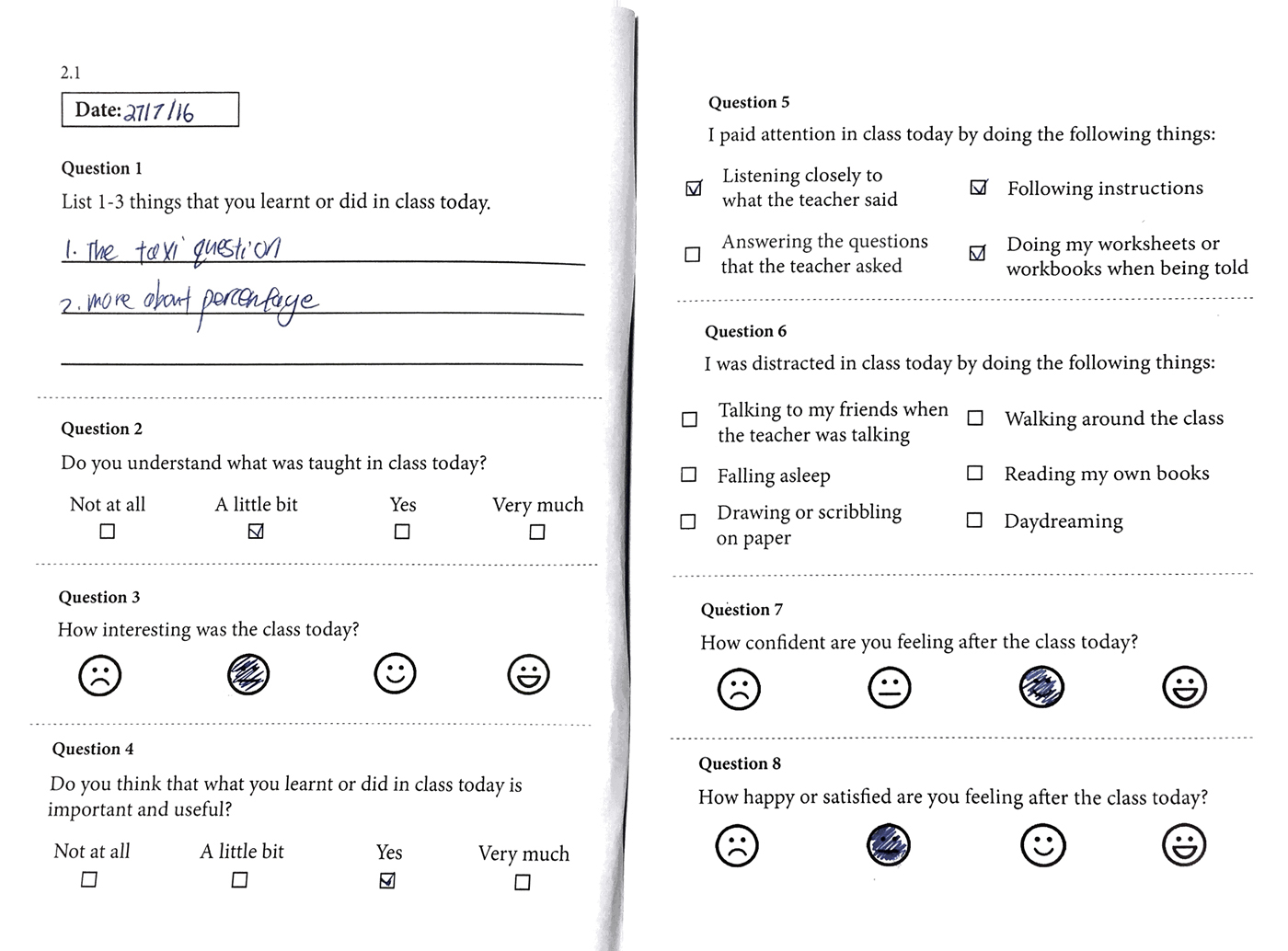
Sample spread from the Primary 5 students’ self-report booklet.
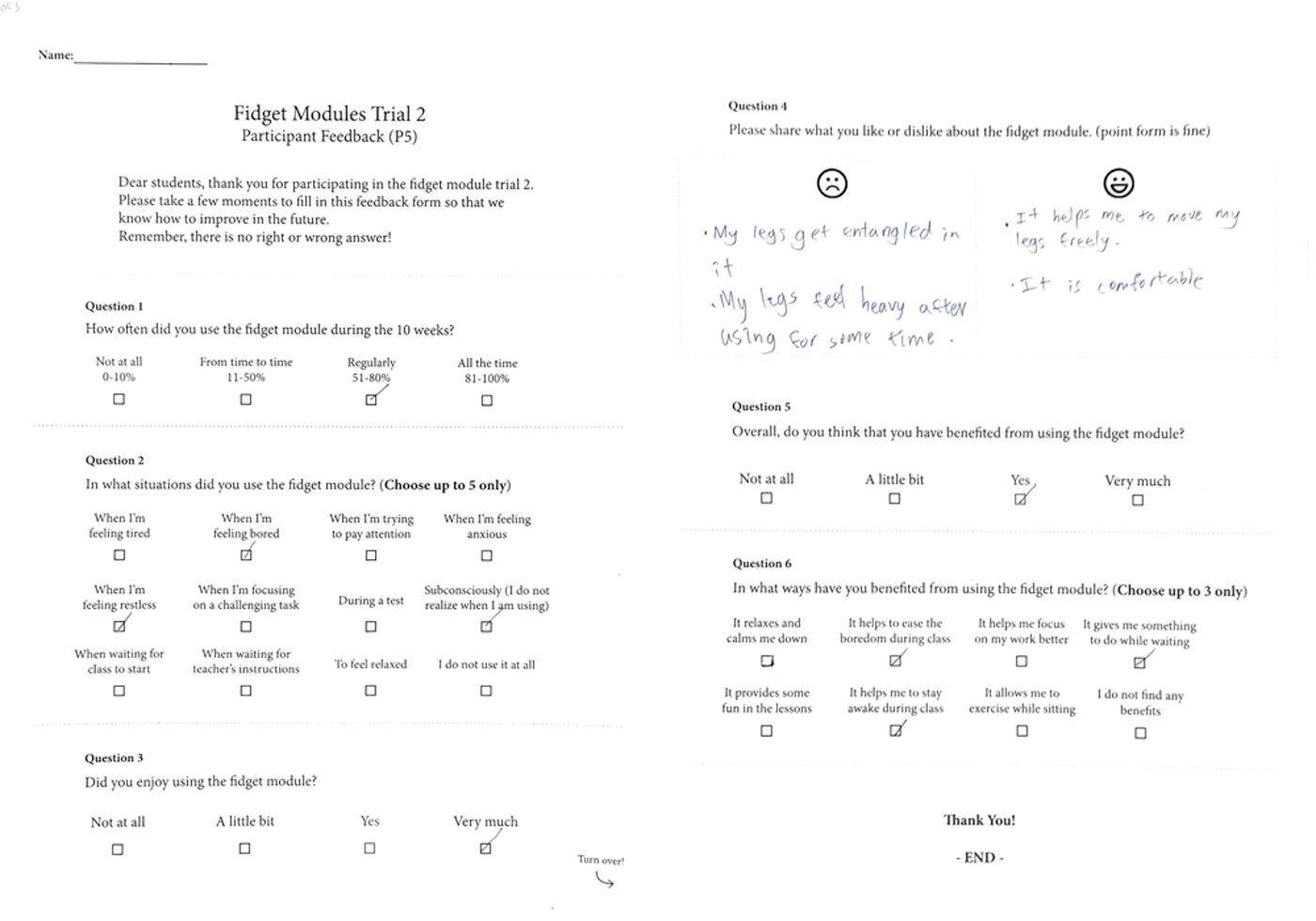
Sample page from the improved post-trial survey that includes questions covering 3 aspects: cognition, emotion, behaviour.
Design Considerations
The design considerations were derived after discussions with the following key stakeholders of Canberra Primary: Principal, Vice-Principal (admin), Vice-Principal (academic), Senior teacher (head-of-level).
1. Discreet
– Does not distract the teacher or other students
– Quiet when used
– Area of movement not too big or distractive
– Simple installation
– Does not distract the teacher or other students
– Quiet when used
– Area of movement not too big or distractive
– Simple installation
2. Safe
– Sturdy enough to take a child’s full leg weight
– Will not easily cause table to drag or flip
-Will not cause child’s foot to be tangled around it
– Sturdy enough to take a child’s full leg weight
– Will not easily cause table to drag or flip
-Will not cause child’s foot to be tangled around it
3. Flexible
– Can be adjusted to cater to varying child heights
– Can be easily/effortlessly “kept away” or “engaged” when needed
– Can be adjusted to cater to varying child heights
– Can be easily/effortlessly “kept away” or “engaged” when needed
Design: Trial 1
For User Trial 1, 3 variations of the fidget module were designed, each allowing a slightly different type of interaction for the users.
The modules consisted of 3 simple components: a standard acrylic bar to secure the modules onto the grilles of the classroom desks, bungee cords, as well as the 3 types of foot rests.



Design: Trial 2
Based on the user feedback from Trial 1 that the elastic strap module was the most popular type, we decided to standardize the type of module issued to all users in Trial 2 and focus on improving the design of the attachment component instead.
We removed the acrylic bar and 3D-printed our own snap-fit clasps to attach the elastic straps to the table grilles to make the modules more lightweight and compact, as well as to make the installation process much quicker and requiring less effort.

